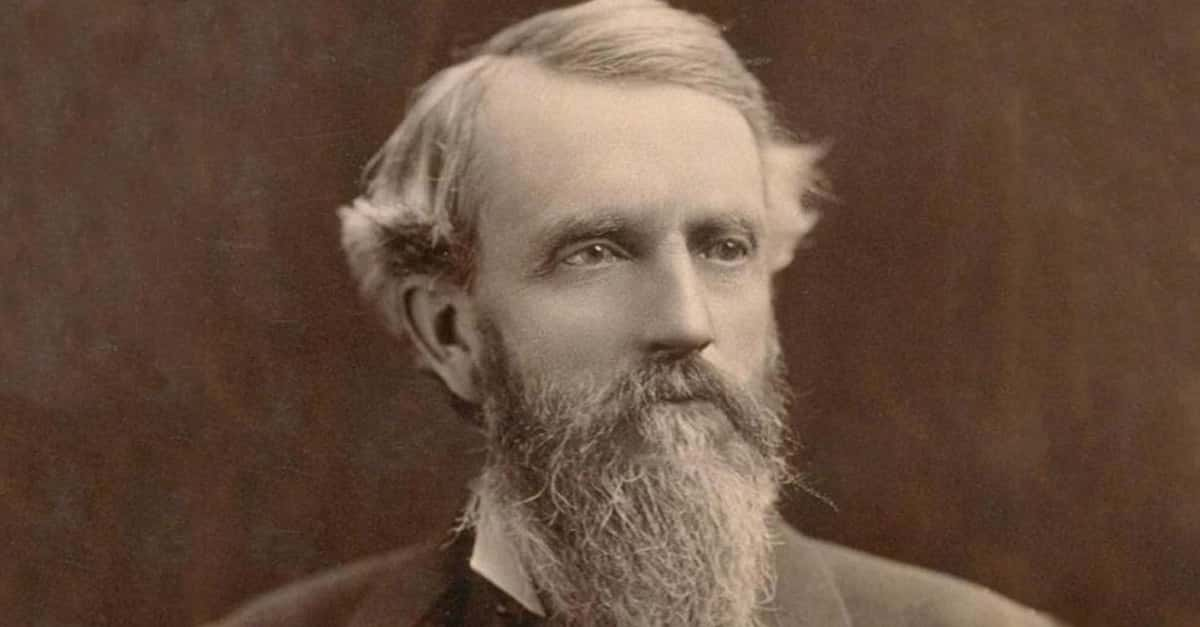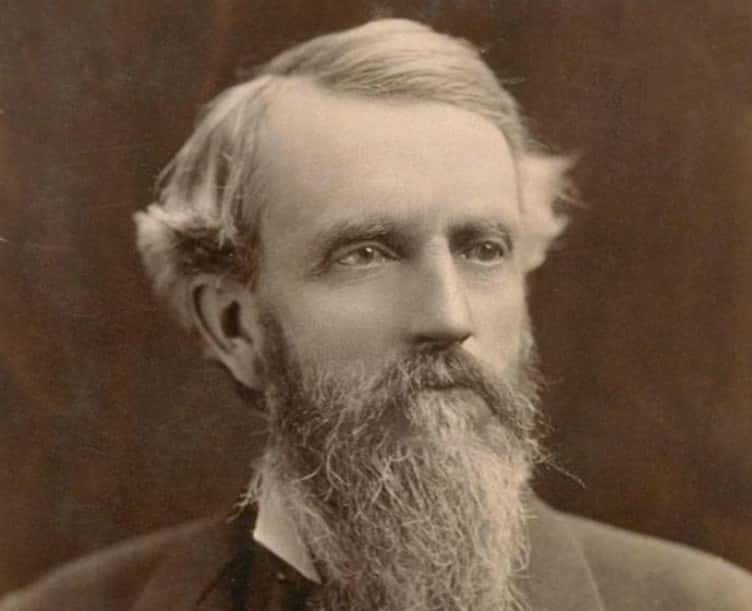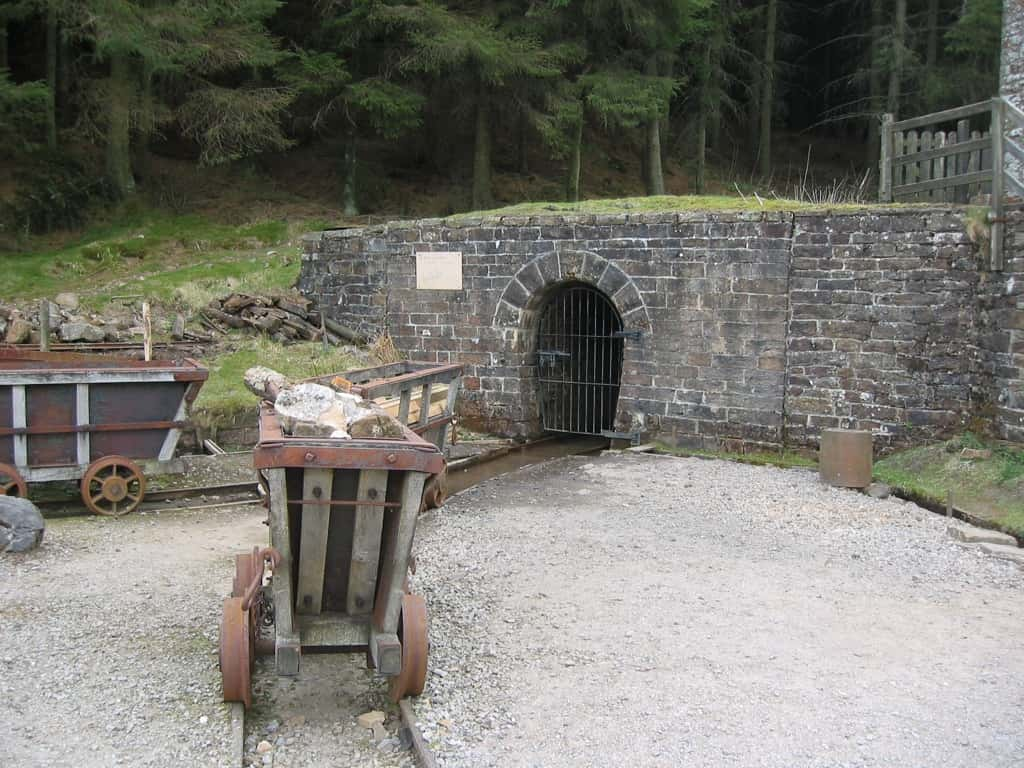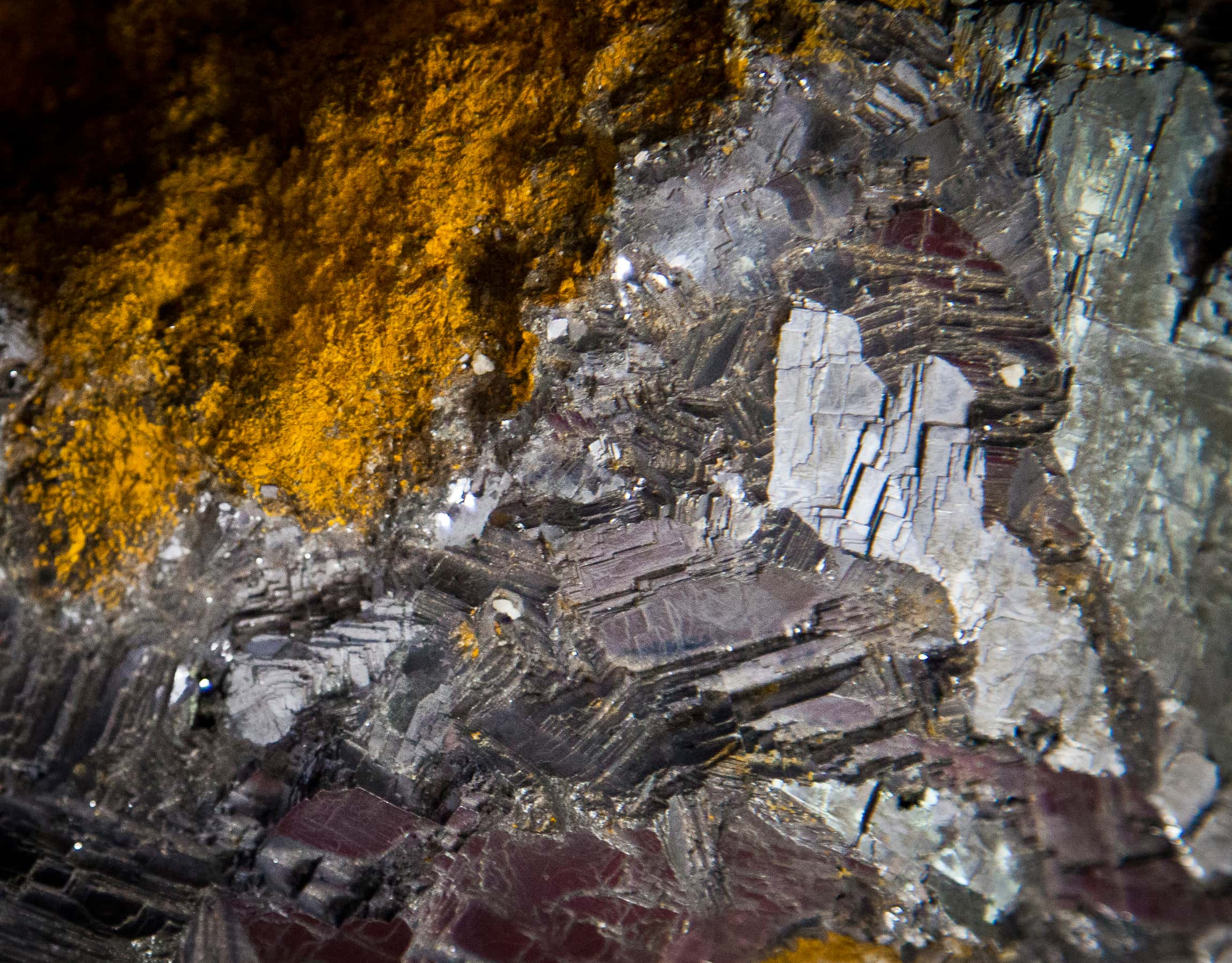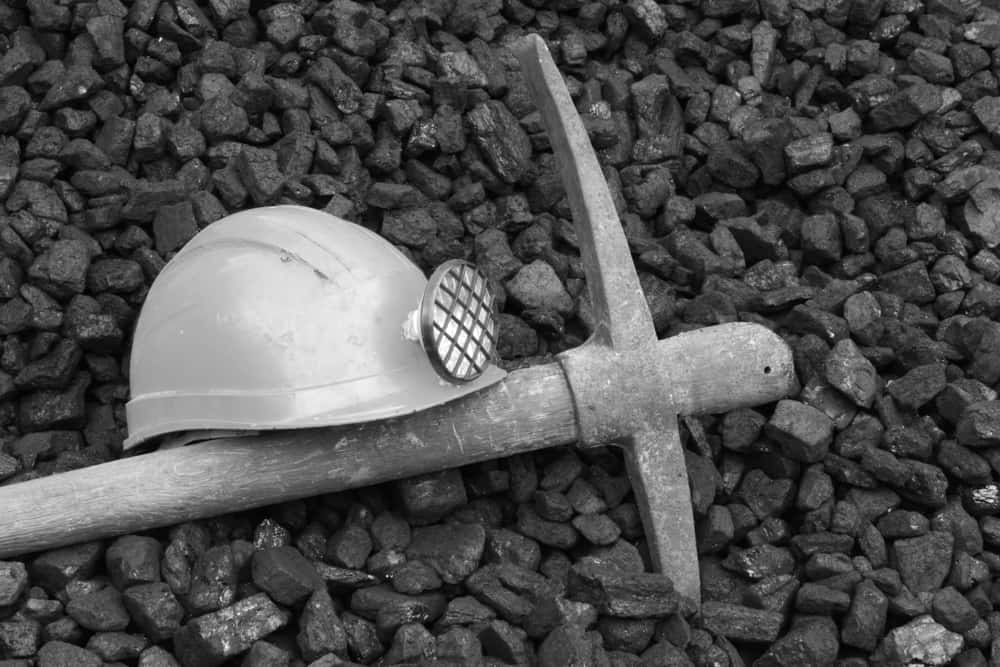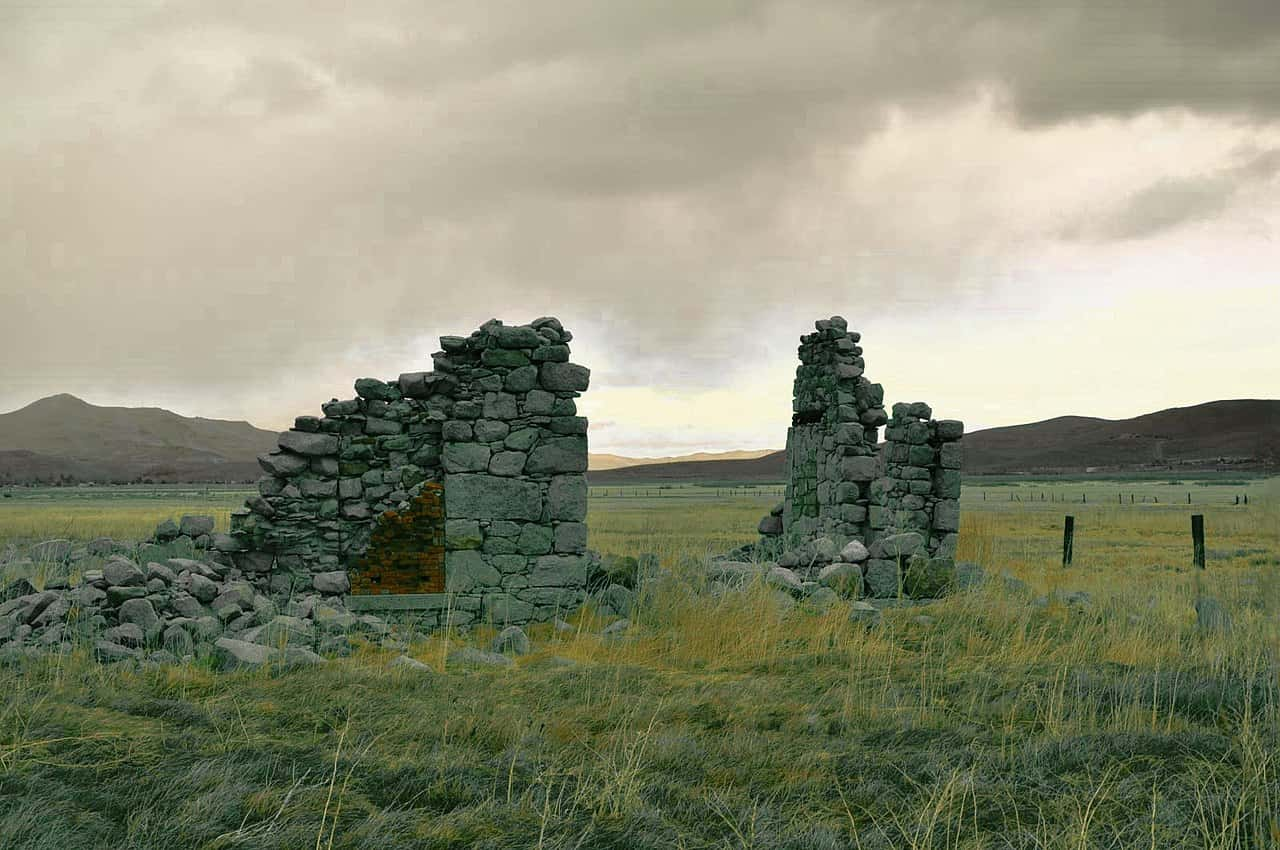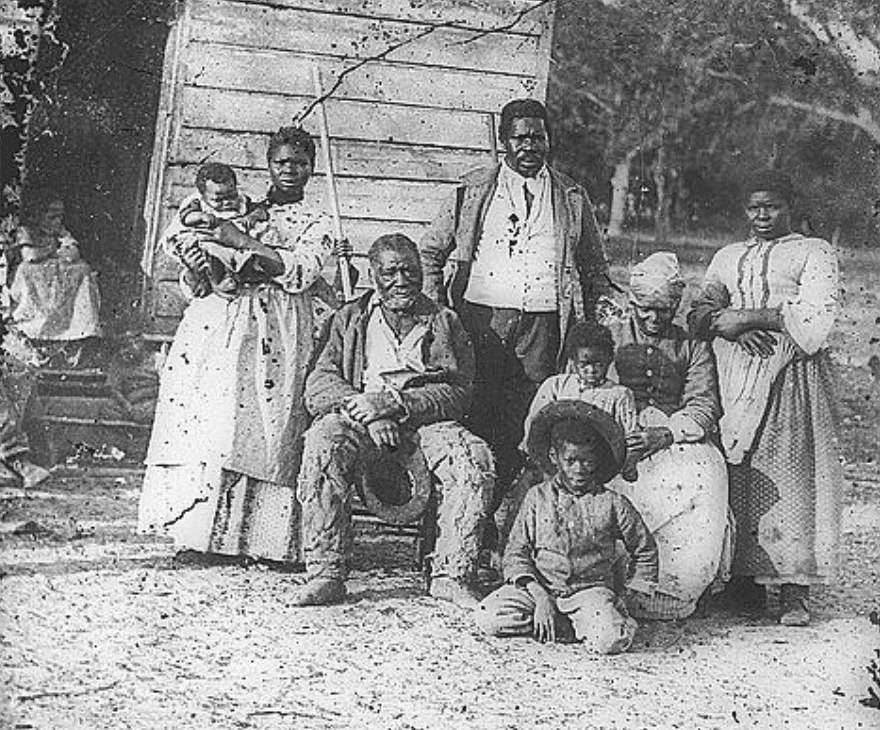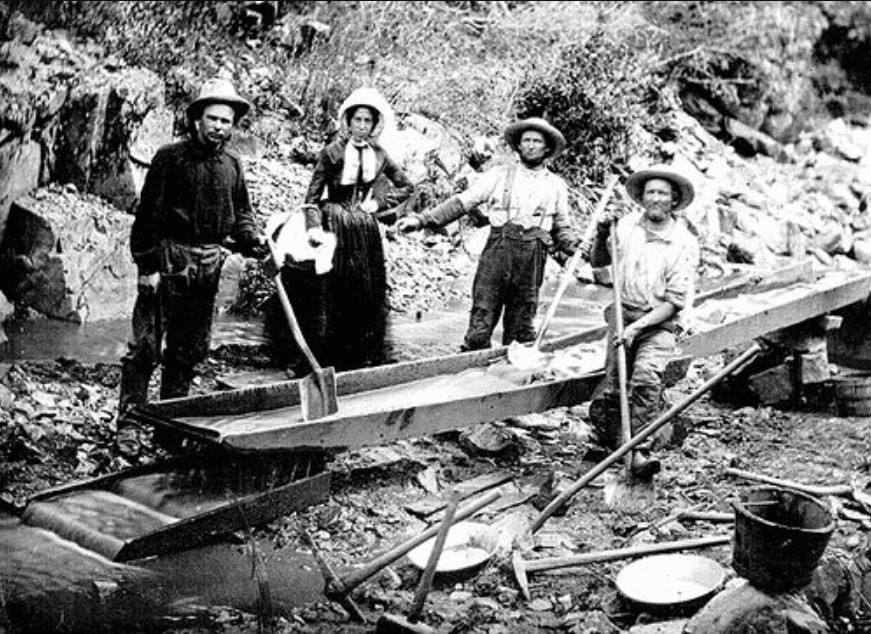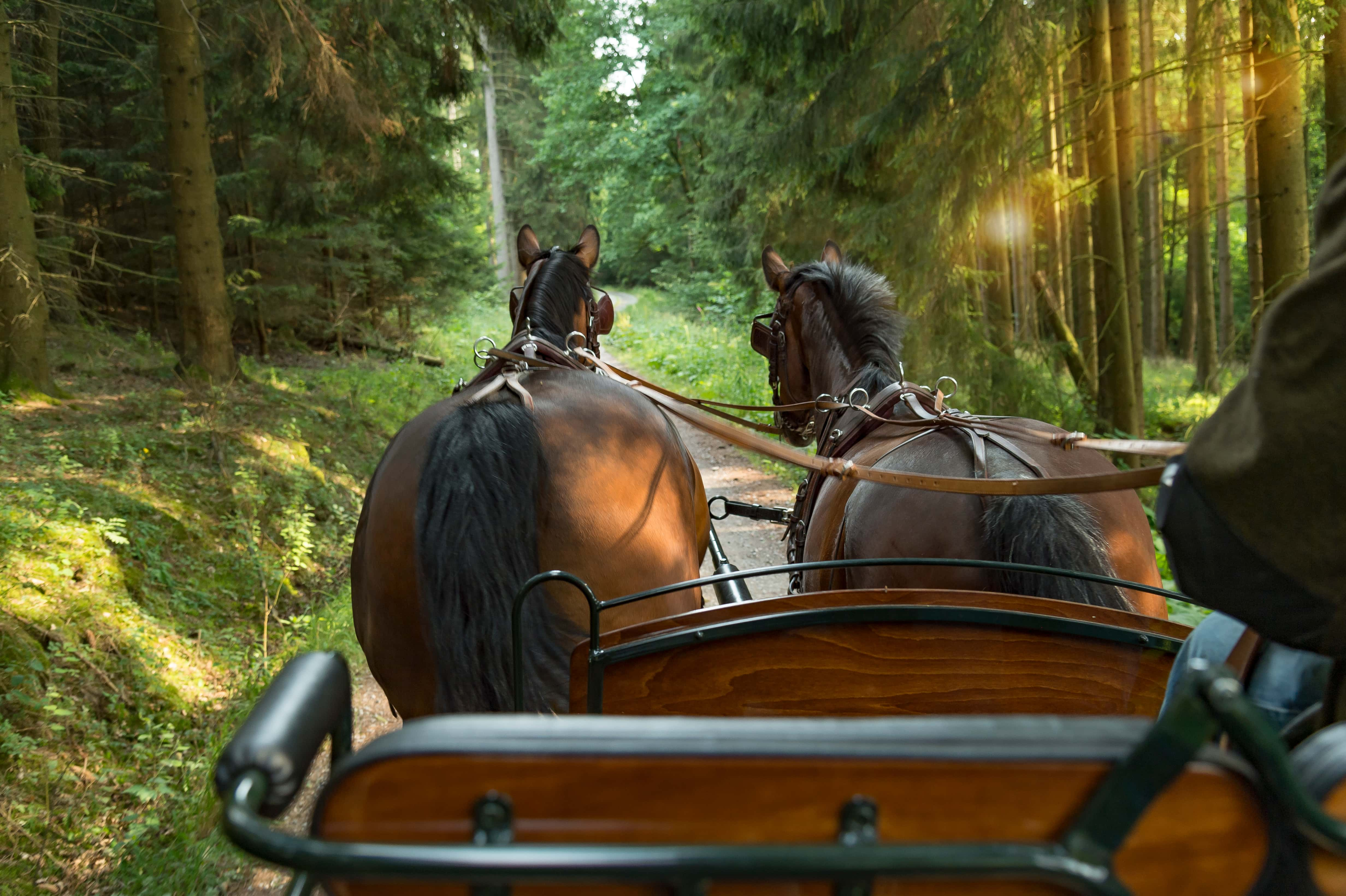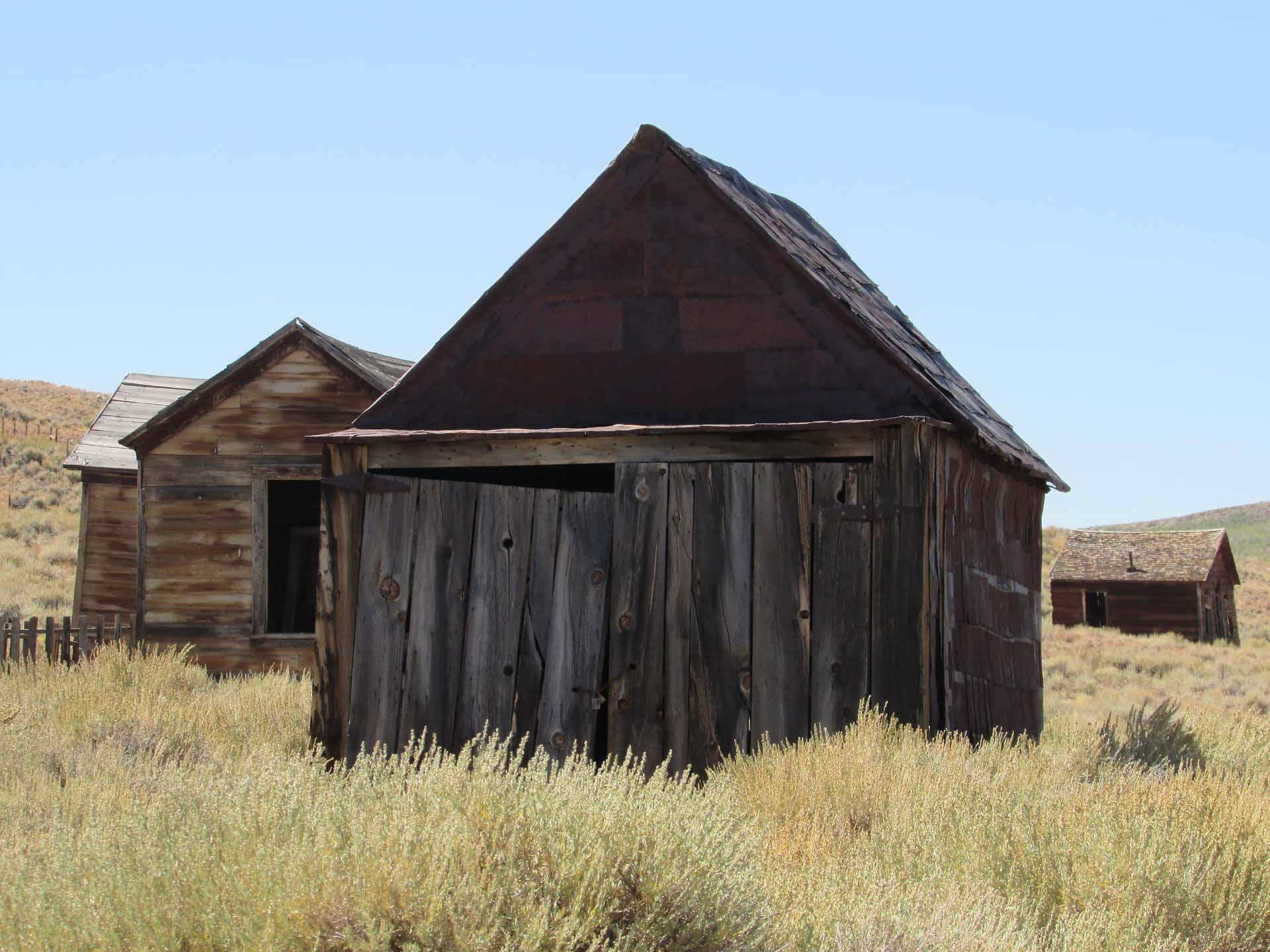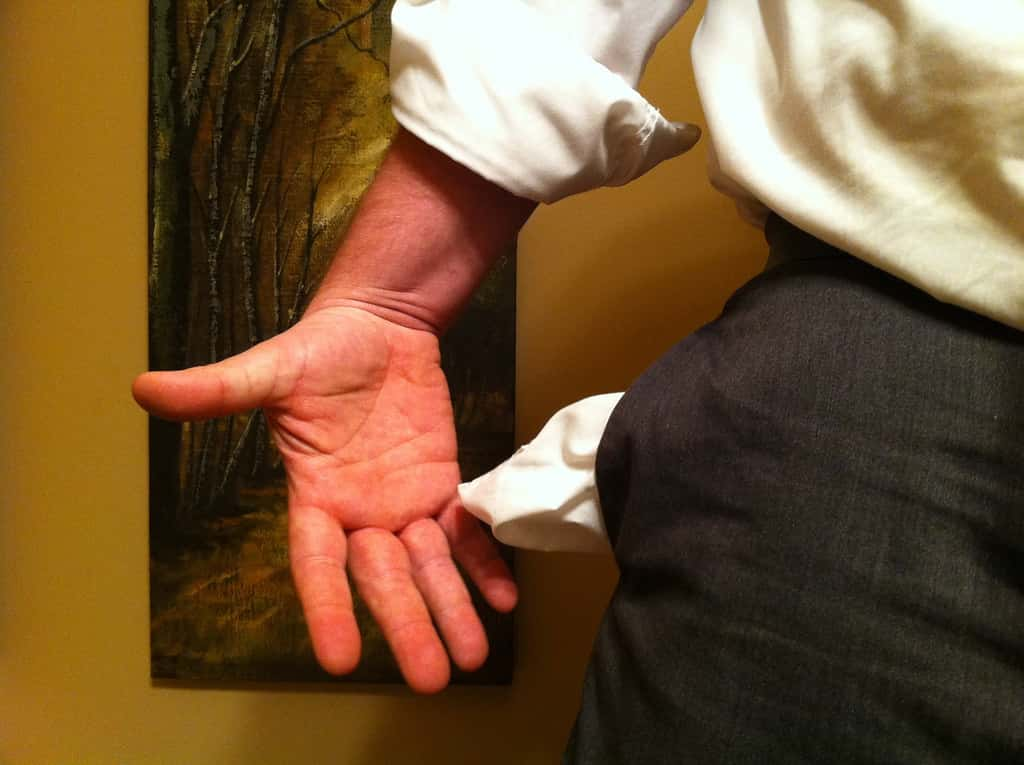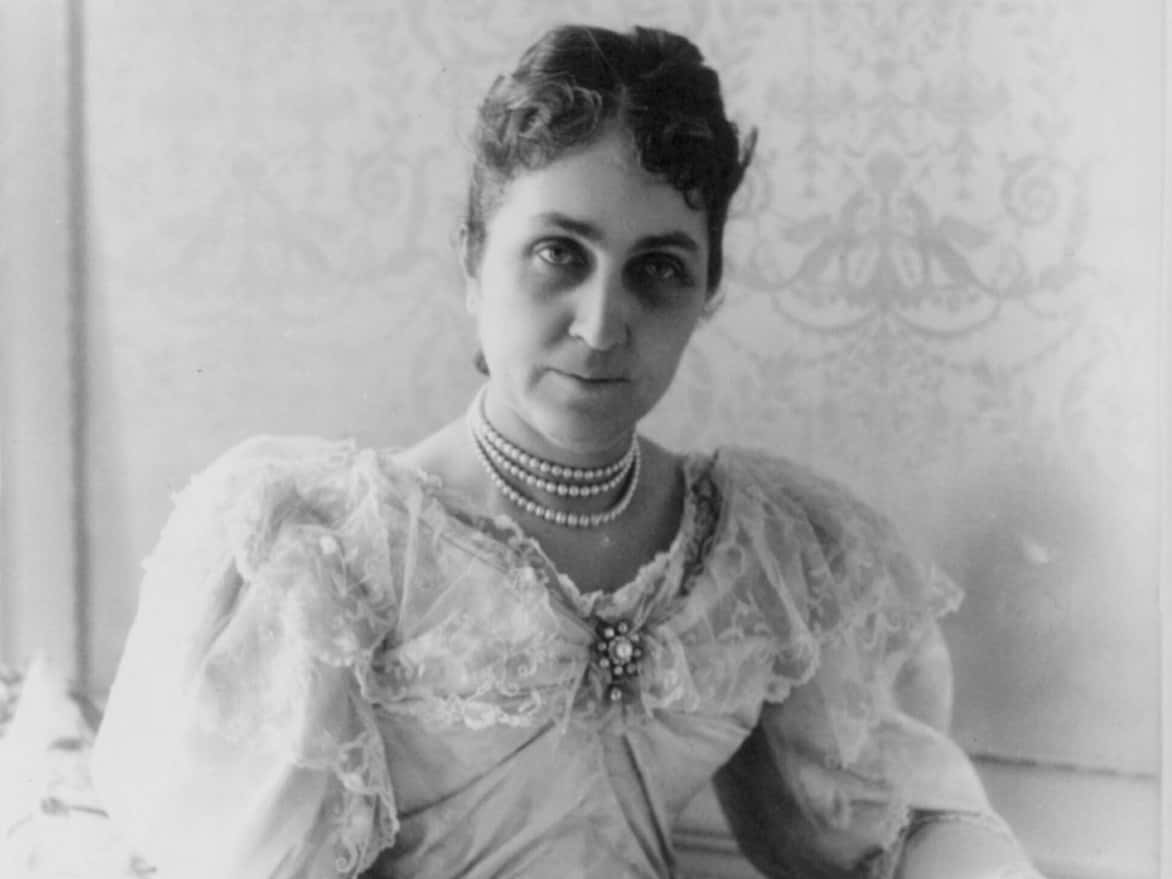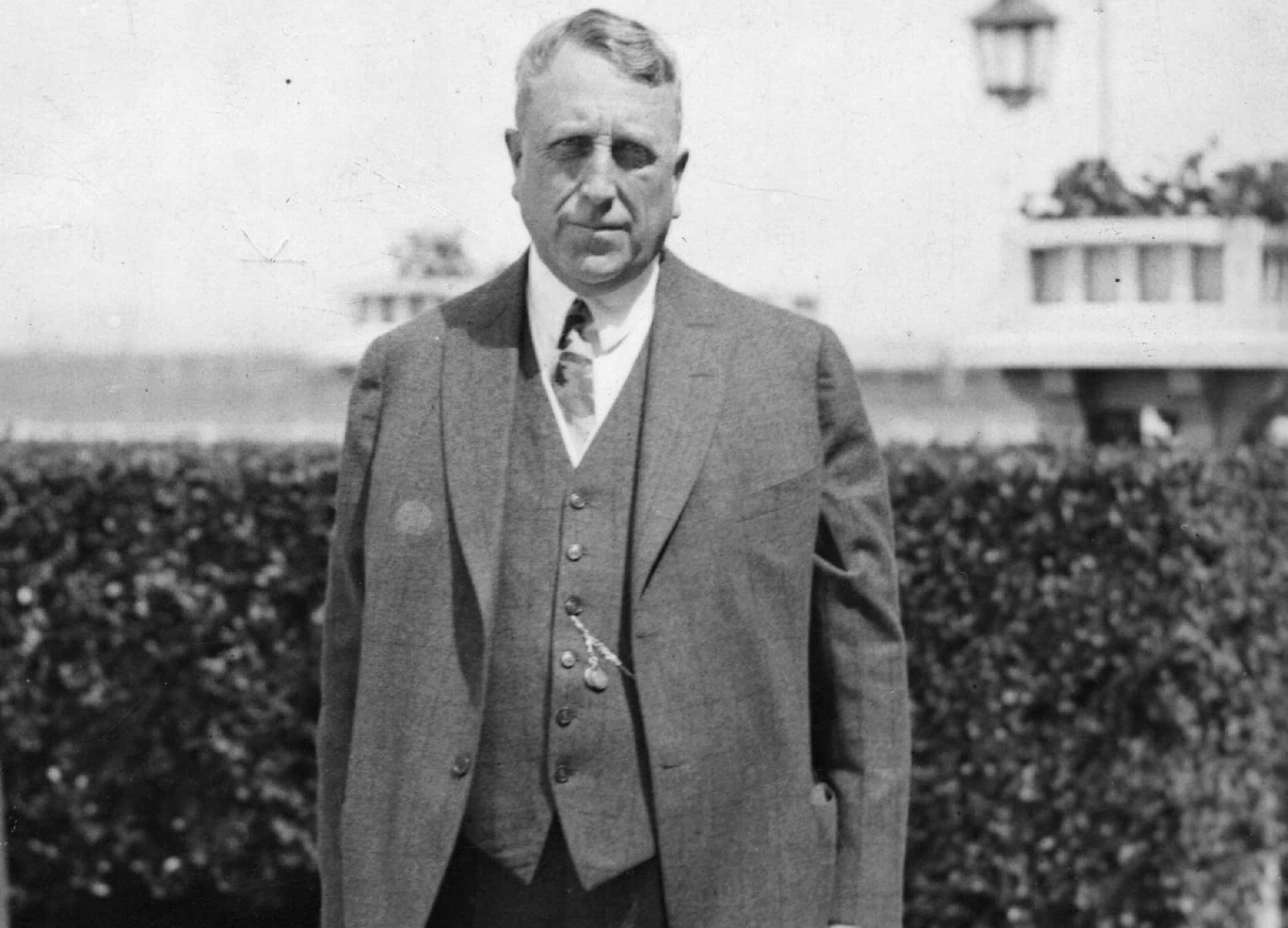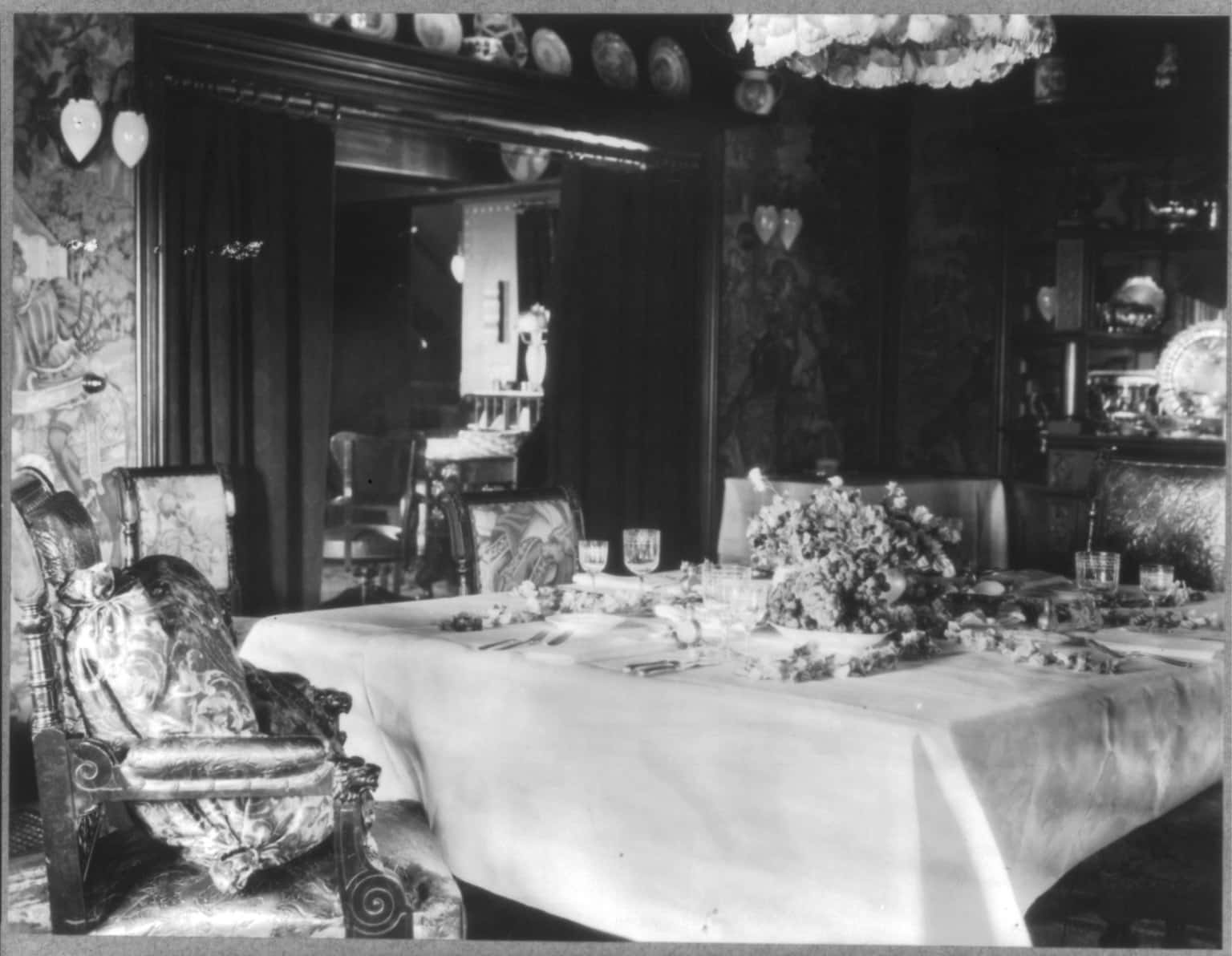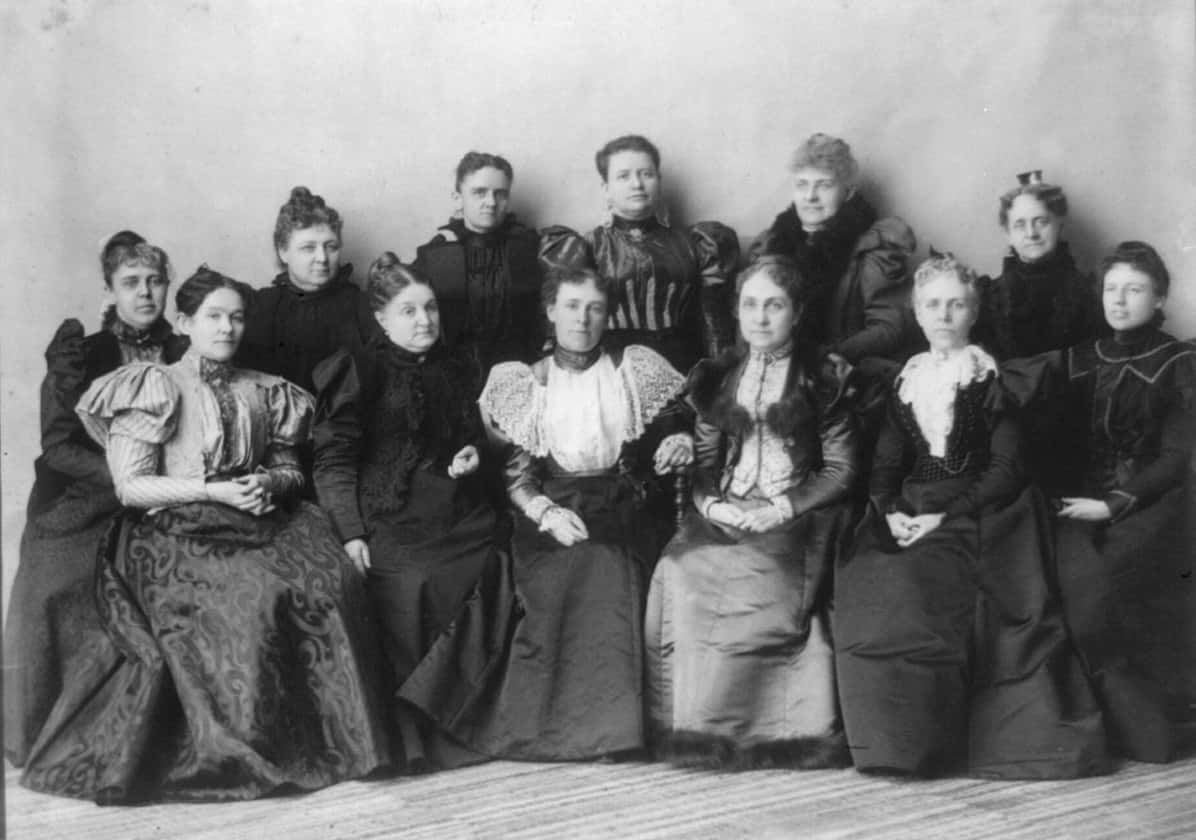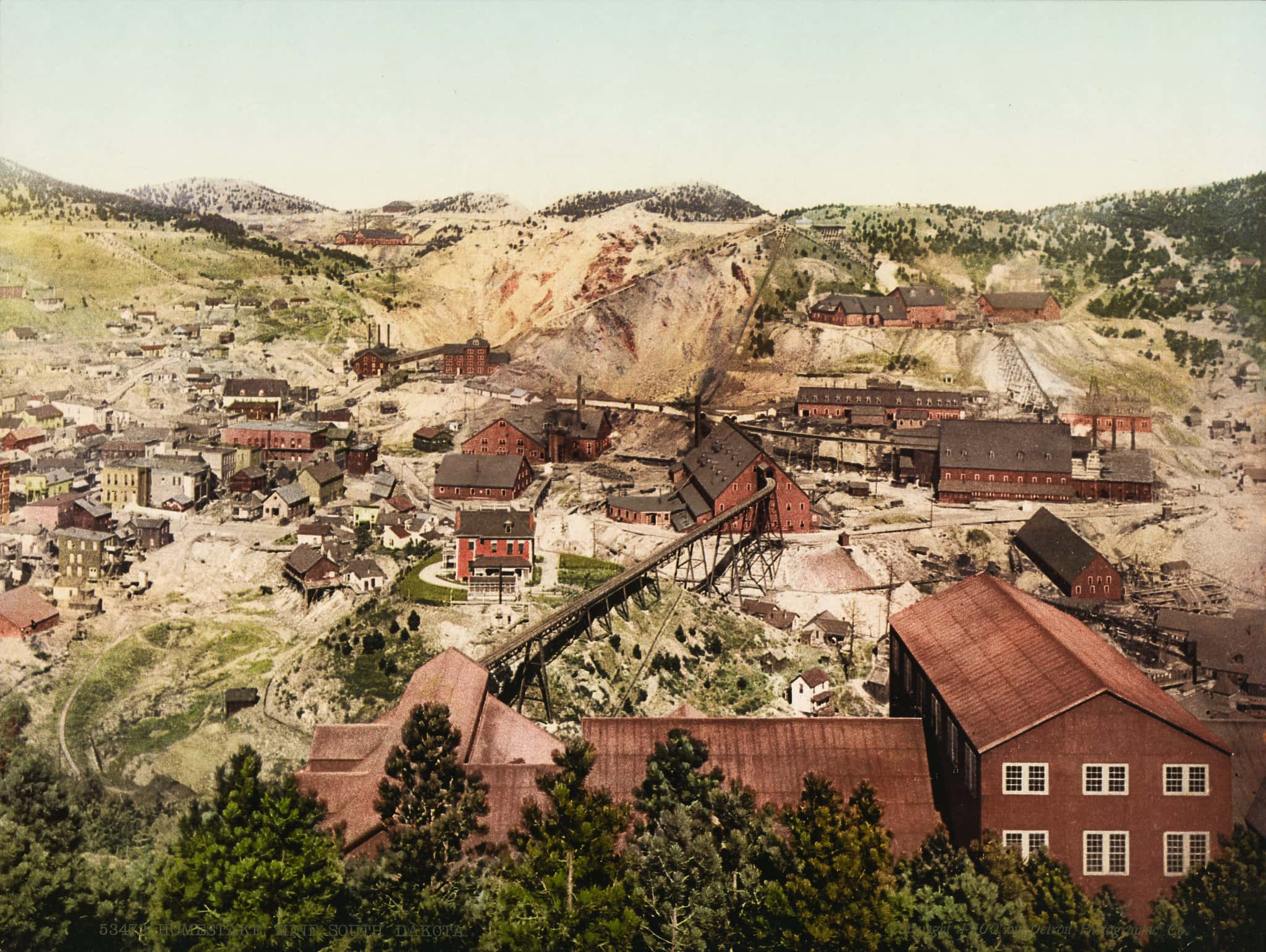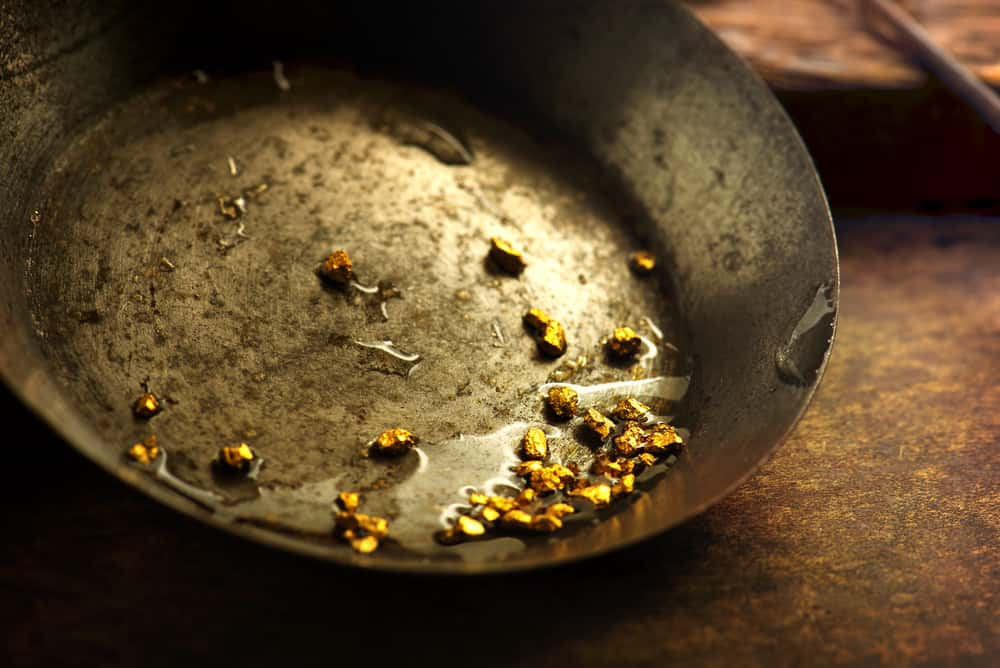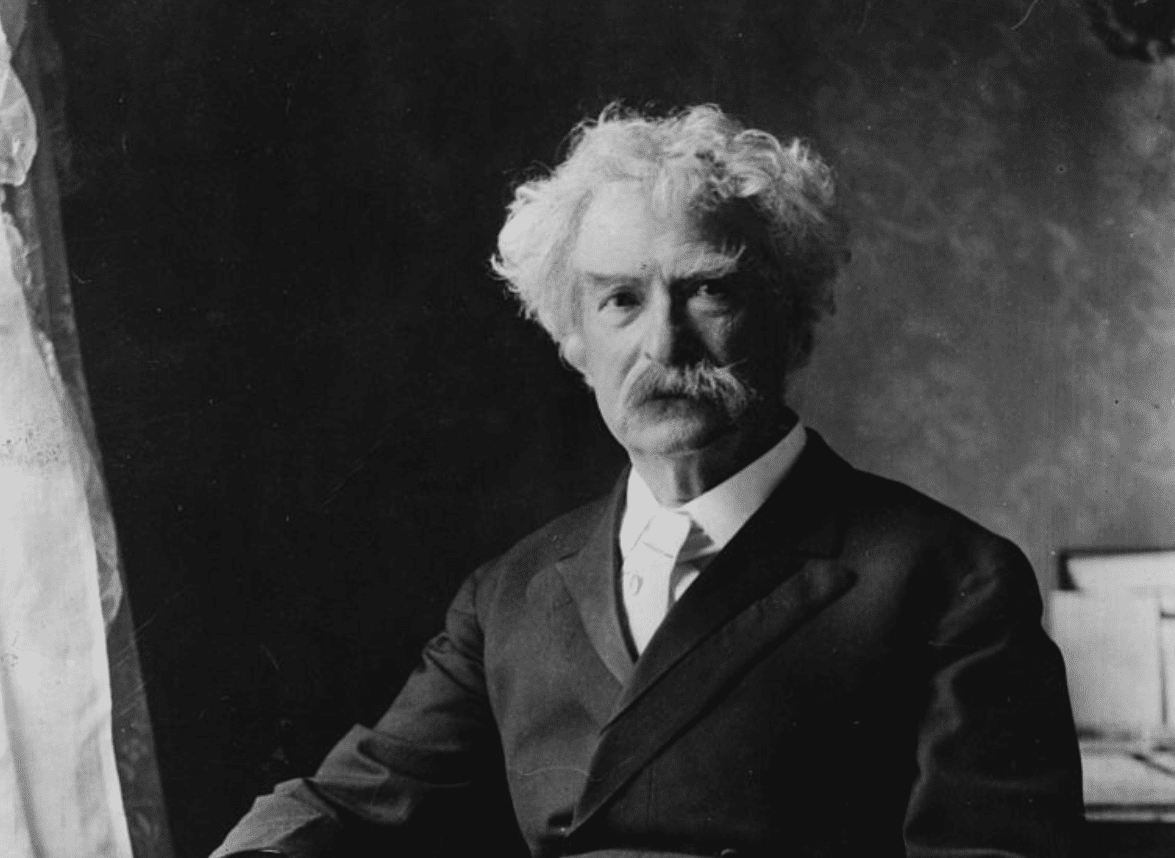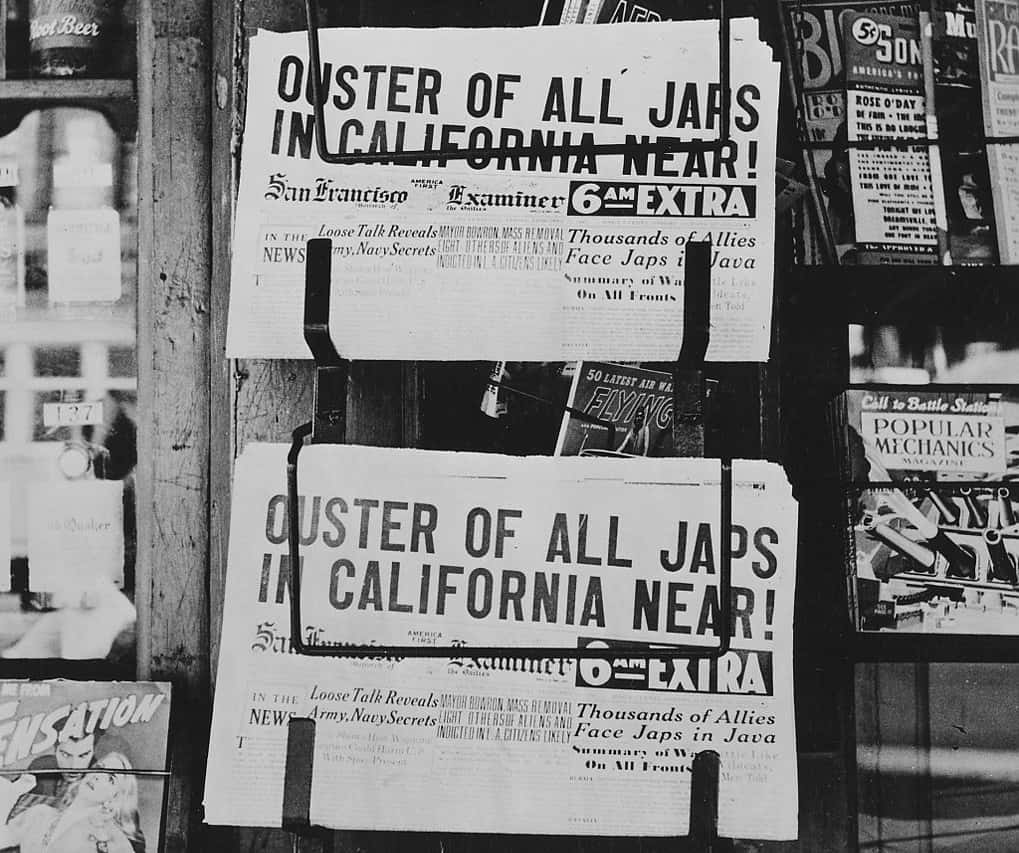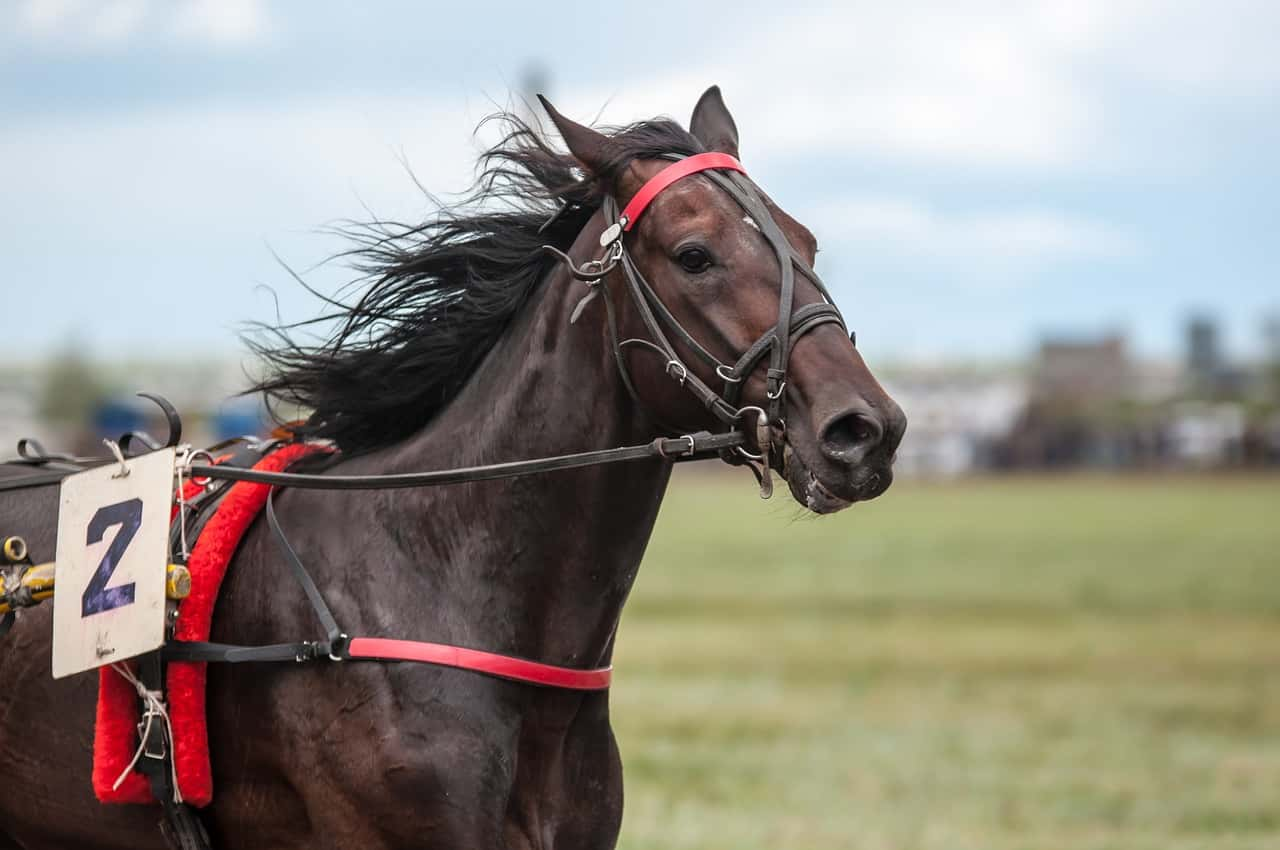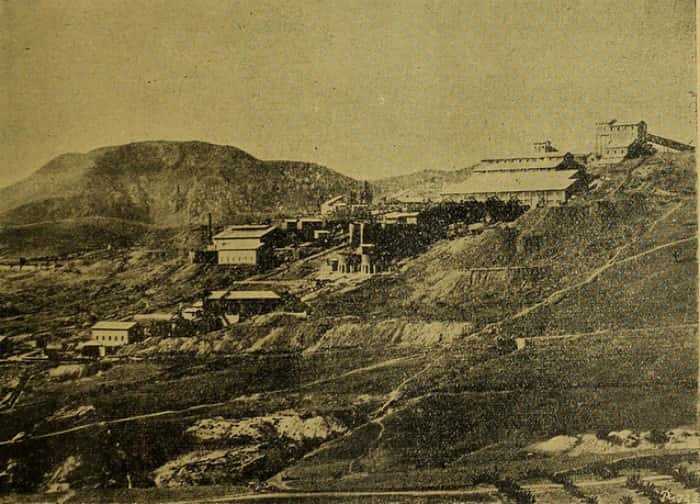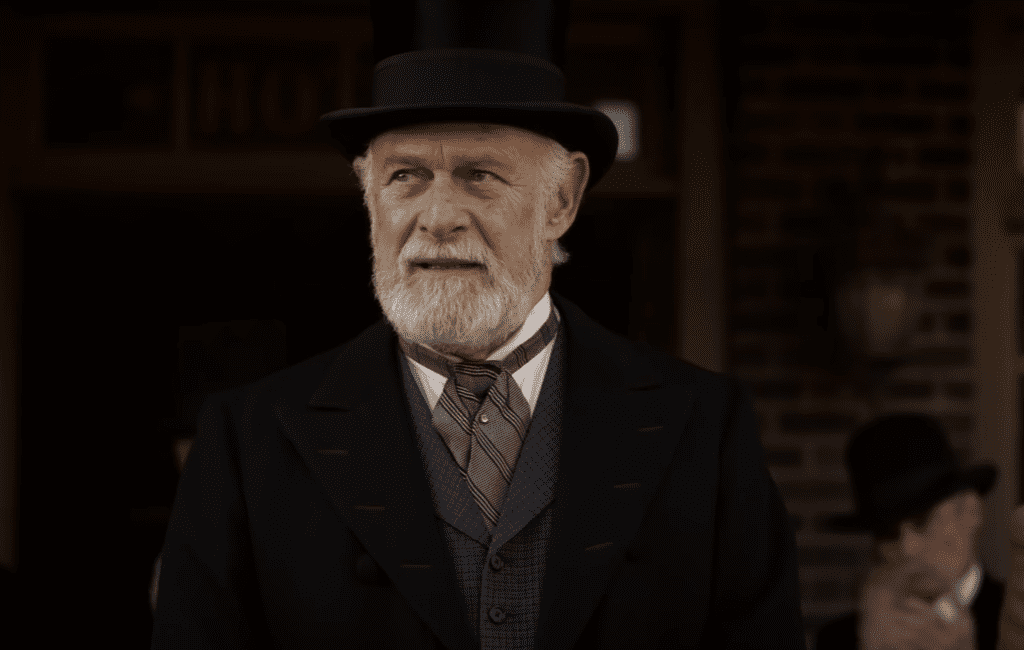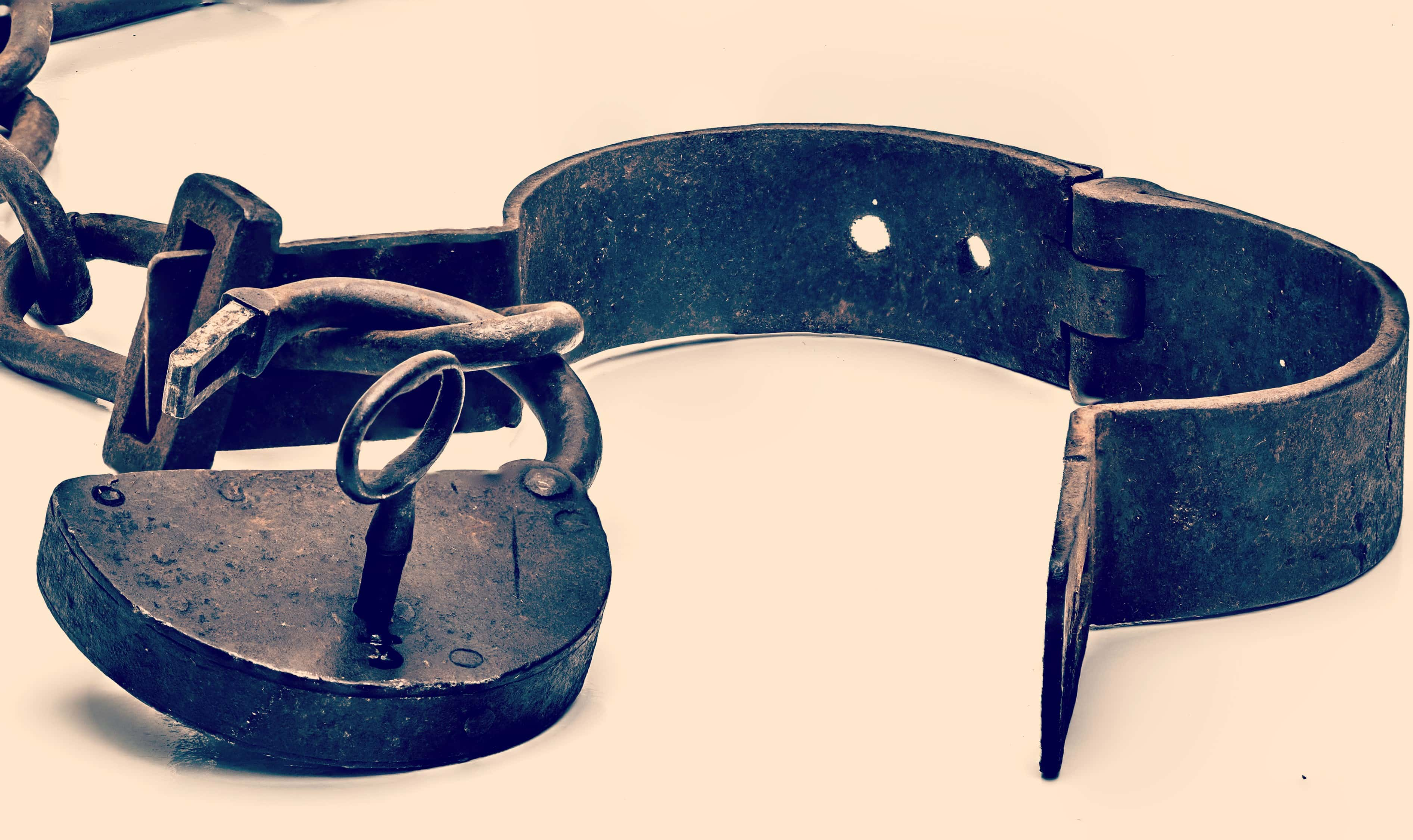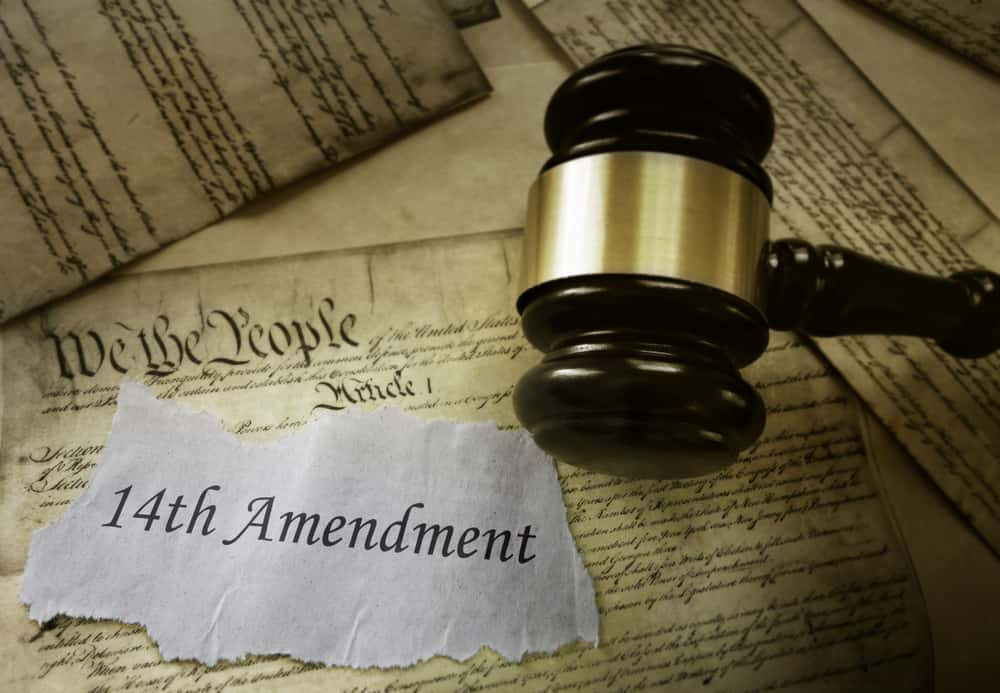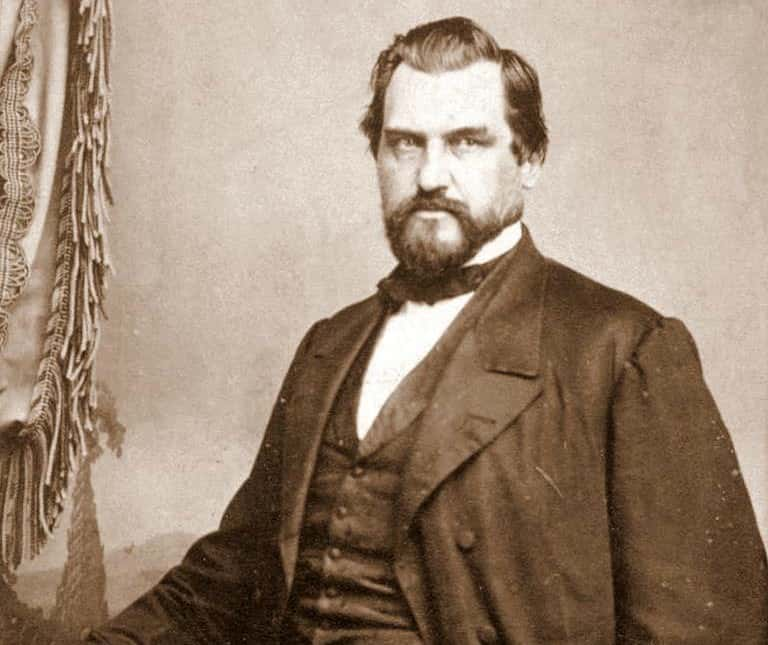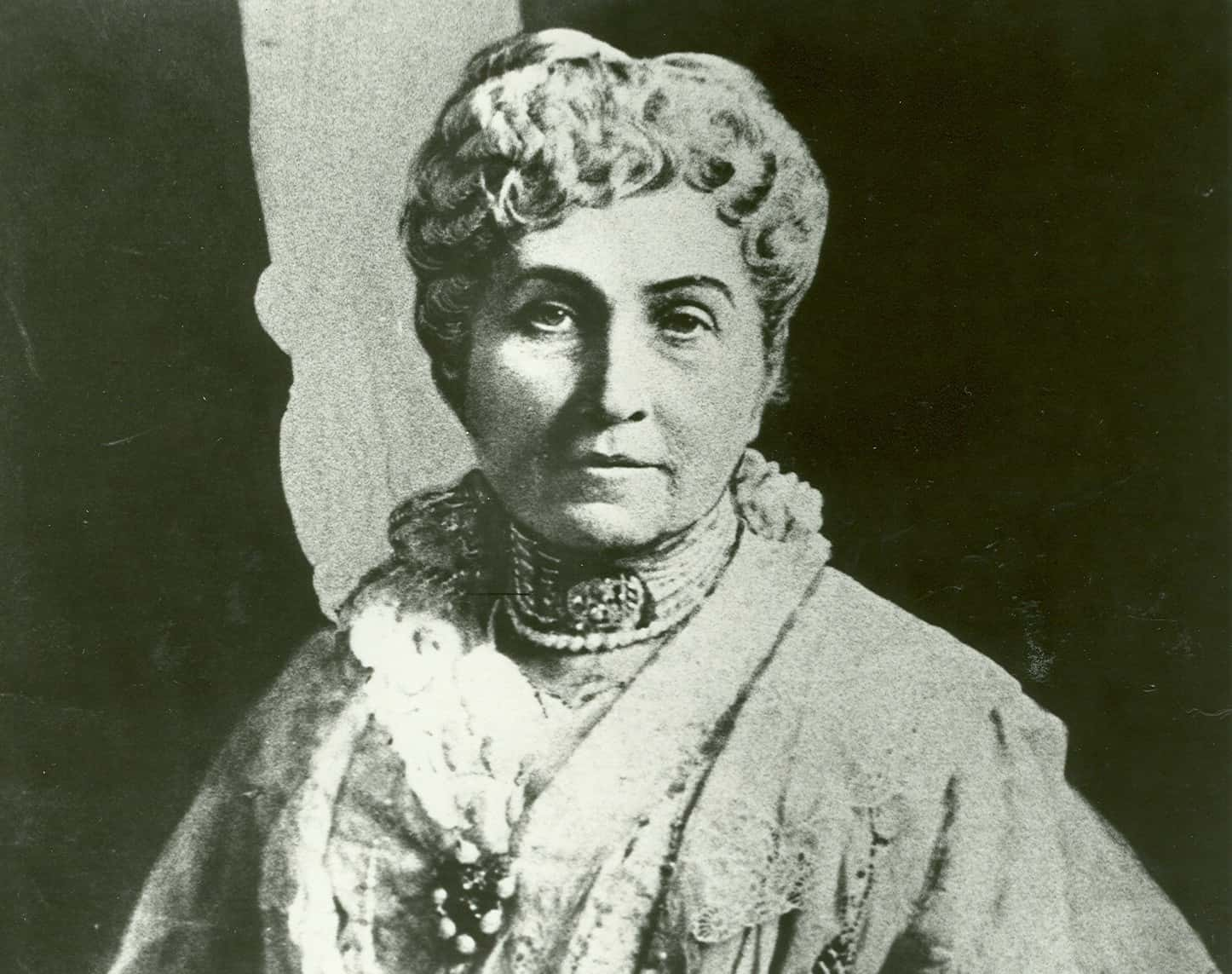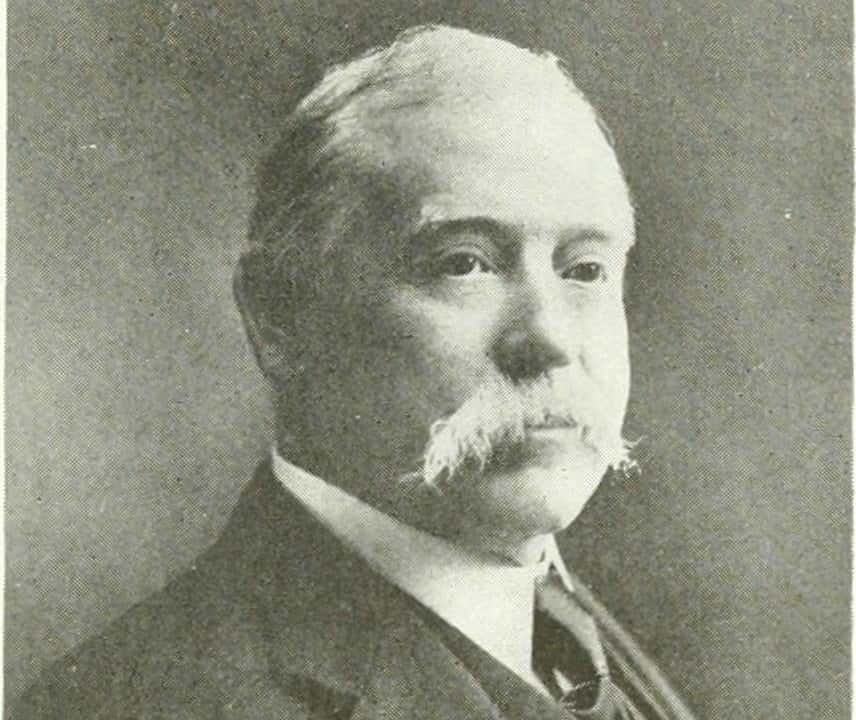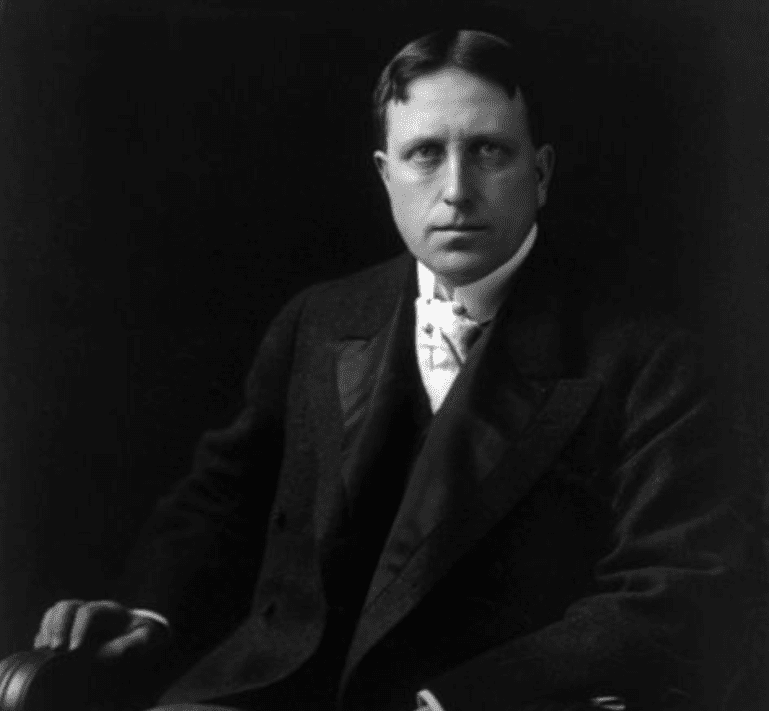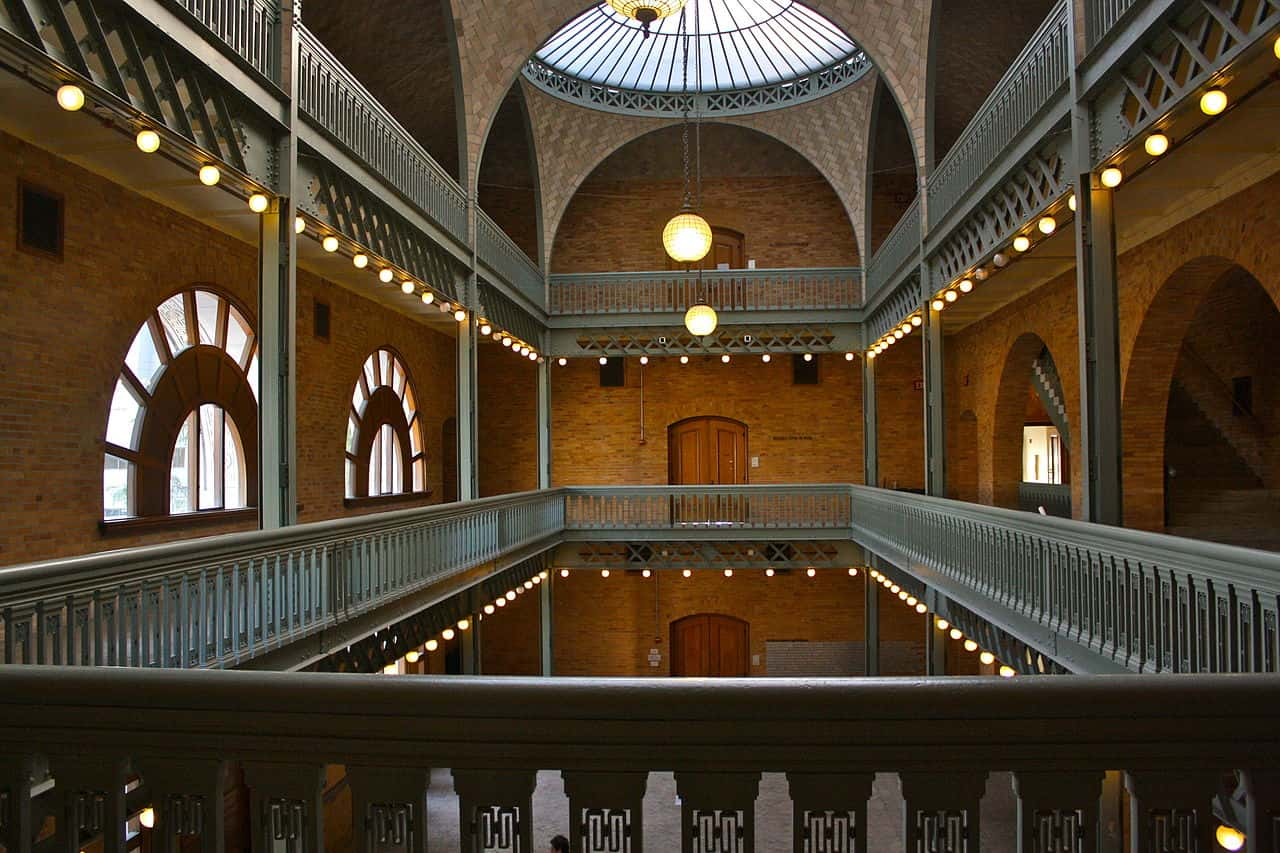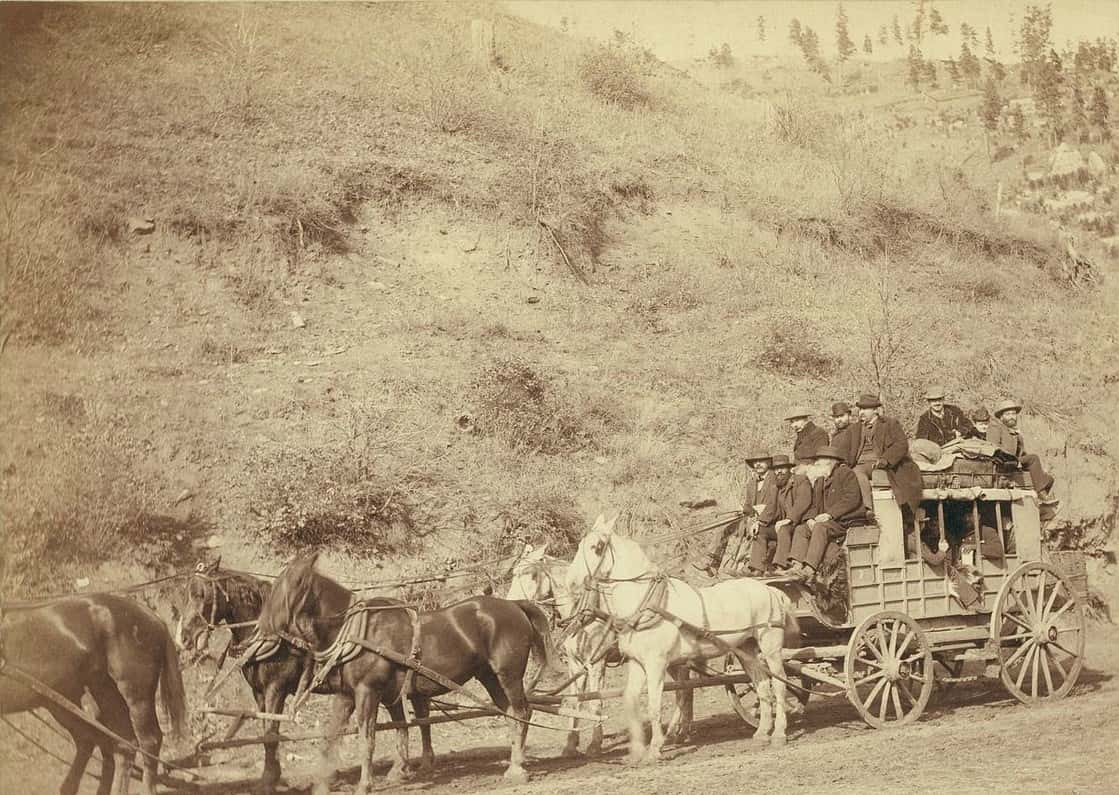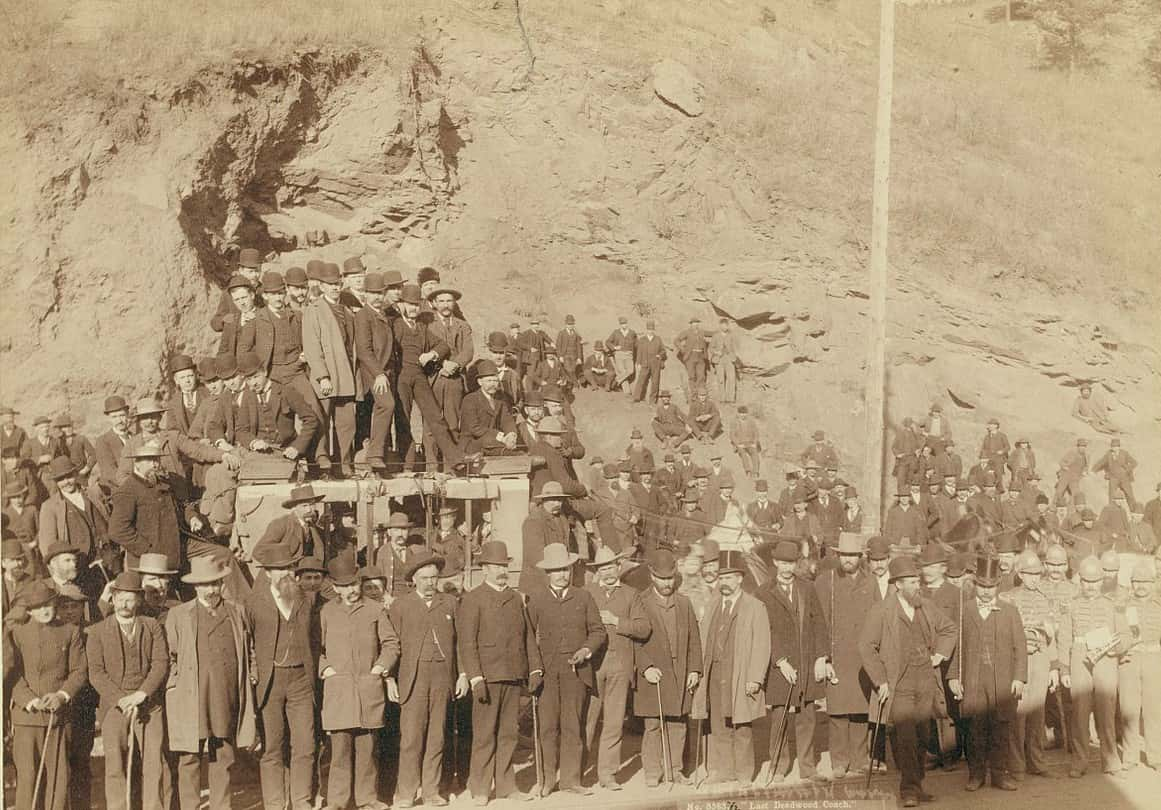The Real-Life Villain Of Deadwood
The HBO series Deadwood brought the millionaire mining magnate and politician, George Hearst, to mainstream attention. The series painted the father of the infamous William Randolph Hearst as a villainous psychopath hellbent on building a fortune by any means necessary. Was the real George Hearst any different? Here are 50 villainous facts about George Hearst.
1. Humble Abode
To say that George Hearst had humble begins would be an understatement. Hearst grew up in rural Missouri in the early to mid-19th century—a, erm, simpler time and place. Hearst and his family, which included his mother, father, and two siblings, lived in a log cabin. We get the impression that he didn’t spend much time at home, though…
2. Lead the Way
Young boys sometimes enjoy playing with rocks and getting their hands dirty—there’s nothing wrong with that. It is a little strange, however, when those rocks are bits of lead. As a child, Hearst enjoyed visiting the local lead mines and was enthralled by the mining operations. He also read books on mining. In all fairness, this was some time before PlayStation and Tonka Trucks had been invented.
3. Mine-ding His Own Business
Playing in the local lead mines wasn’t all that bad. The miners allowed Hearst and his friends to go rooting around in the dirt. Referring to his earlier years, Hearst claimed, “Sometimes we made from four to six bits a day.” I have no idea how much that is, but I’m going to venture a guess that it wasn’t a lot.
4. Earth Whisperer
As a child digging around in the dirt for scraps of lead, Hearst must have struck quite the image around Missouri. Legend has it that local Native American tribes referred to Hearst as “the boy the earth talks to.” We’ll never know what secrets Mother Earth whispered into Hearst’s ear, but it was probably along the lines of, “Money, money, money.”
5. It’s Genetic
George Hearst’s intuition for mining was one of the most memorable things about him. After his passing, Hearst’s contemporaries said, “George Hearst was probably the greatest natural miner…” and “he had a congenital instinct for mining.” That may be all well and true but, honestly, it just seems like he had a “congenital instinct” for making mad money.
6. Man of the…Cabin
Tragedy stuck the Hearst family when George was 26: His father suddenly passed, leaving George as the man of the house. Unlike his own son—the infamous William Randolph Hearst—George Hearst did not inherit a fortune. Quite the opposite. Hearst became the recipient of his father’s three mortgaged farms and middling general store. His father also left him with a debt of a different kind…
7. Slaving Away
Hearst grew up in a family of white farmers in early 19th century Missouri, and though may have lived in a log cabin instead of a plantation house, the Hearst family were slave owners. There’s no account of how George Hearst treated his slaves, but his political leanings wouldn’t suggest that he spared the whip…more on that later though.
8. Call 1-800-DebtFree
The debt that Hearst inherited from his father was valued at $10,000—or about a quarter of a million dollars today. Thankfully, Hearst’s Midas touch kicked in just in time. He leased a couple of lead mines in the area and turned that lead into solid gold. Hearst made enough money to clear all of his father’s debts and support his family. Until he left them behind…

History's most fascinating stories and darkest secrets, delivered to your inbox daily.
9. California Dreaming
The California Gold Rush attracted hundreds of thousands of people from all over the world hoping to strike it rich quick. Most of them found more hardship than precious ore…except for George Hearst. Upon hearing about the news of gold in California, Hearst and two of his cousins (Jacob and Joseph Clark) left Missouri for the Golden State—it wasn’t exactly a vacation though.
10. A Bumpy Road
Imagine a comfortable seat on a luxurious train traveling through the picturesque landscape of the American West. Now forget about it. Instead, imagine traveling the 1,800 miles from Missouri to California largely exposed to a harsh semi-arid desert climate and potential raids by hostile Native American tribes. That’s what George Hearst and his two cousins endured in their pursuit of California gold. Was it worth it?
11. If at First You Don’t Succeed…
When Hearst finally arrived in California, it wasn’t exactly as you’d picture it. Instead of the stereotypical image of the miner who strikes gold, George Hearst’s first winter in California was abysmal—he and his cousins barely made ends meet…
12. Three Broke Boys
Hearst and the Clark brothers invested what little they had into their placer mining venture. They probably banked on Hearst’s Midas touch making them filthy rich. Instead, at the end of their first winter in California, the trio found themselves with barely two pennies to rub together. They had about $40 between them—or about $1,000 in today’s money.
13. Prosper-specting
Digging in the dirt was fun for George Hearst—when he was a kid. Shortly after his placer mining failure, Hearst found a large gold-bearing quartz deposit in Grass Valley. This find and another one got Hearst into the profitable habit of quickly selling mines after developing them—making him one of the foremost prospectors in the US.
He wasn’t digging around for “bits” anymore.
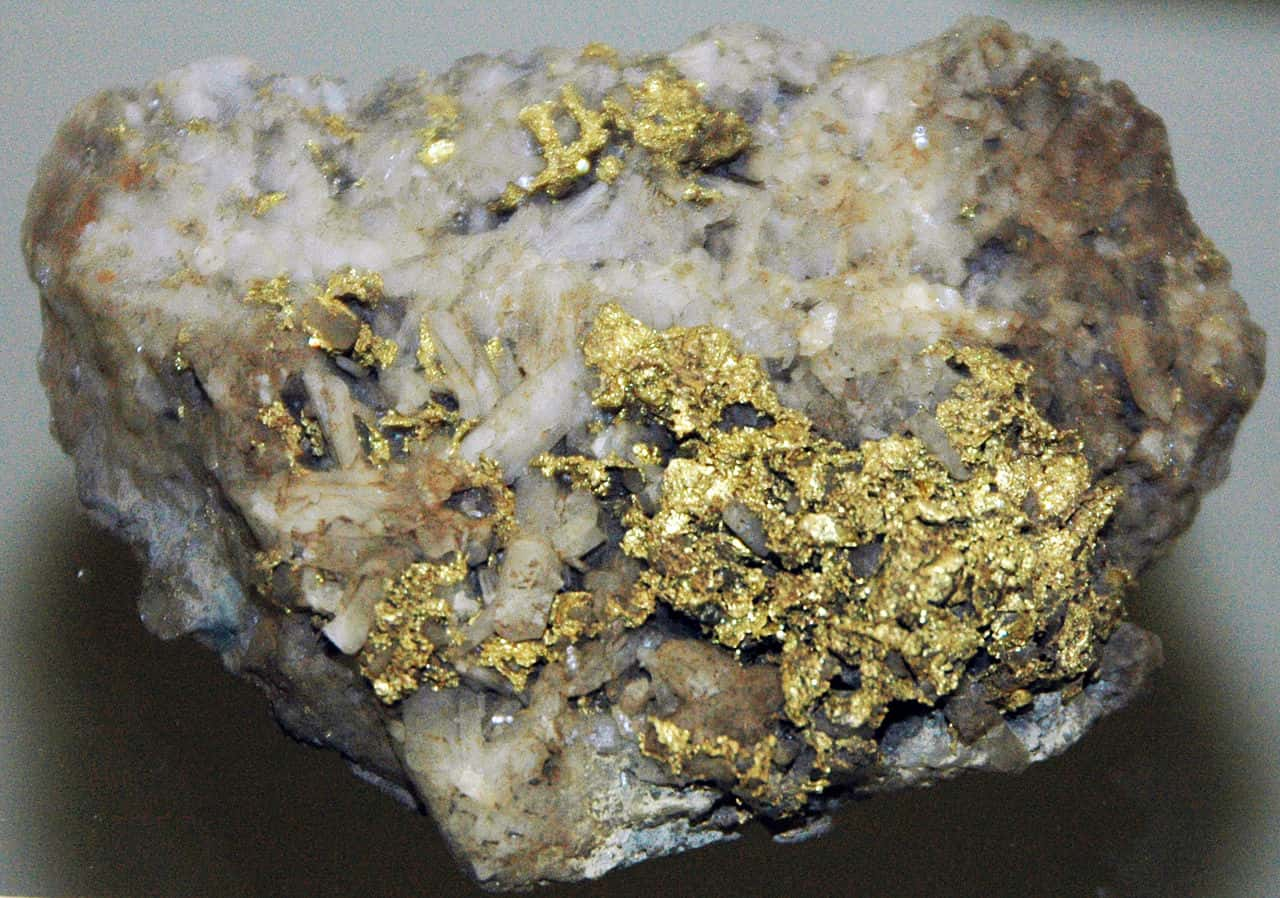 Wikimedia Commons, James St. John
Wikimedia Commons, James St. John
14. Mama’s Boy
Throughout his ups and downs in California, Hearst still managed to provide for his family. In fact, when his mother’s health began to decline, Hearst left his business interests in California and returned to Missouri just to be by her side. He should thank her though. It turned out to be a fortuitous trip for him…
15. Cradle Mining
What’s the biggest age difference that you could tolerate in a relationship? Five years? 10 years? How about 23 years? In 1860, George Hearst, then aged 42, eloped with Phoebe Apperson, then aged 19, when he returned to Missouri to look after his mother. While the standards for age in marriage were different in the 1800s, even Apperson’s parents considered Hearst to be “too old” for their daughter.
However, that wasn’t the only problem with the union.
16. Too Close for Comfort
George Hearst and Phoebe Apperson were distant cousins. How distant, you ask? Does it matter? Cousins, people. Cousins.
17. Papa, Don’t Preach
There may have been some added pressure for Hearst’s and Apperson’s peculiar elopement. A year or so into their marriage, Phoebe Apperson gave birth to their only son—the media magnate, William Randolph Hearst. The timing of Apperson’s pregnancy has led to questions surrounding the circumstances of their marriage.
There’s limited evidence that Apperson was pregnant when she raced down the aisle.
18. Hey, Big Spender
As Hearst’s wealth grew, so too did Apperson’s ability to spend it. But if Hearst minded his wife’s expensive tastes, he didn’t really show it. At the “opening”—because “housewarming” is for peasants—of their lavish Washington, DC home, Hearst quipped about his wife’s spending, “I can’t see the fun in my wife’s rackets.”
In all fairness, she was half of that fortune…
19. Boss Lady
Phoebe Apperson was no gold digger—at least not in the popular sense of the term. The former school teacher was an outspoken suffragette. In letters between Hearst and Apperson, it became very obvious that Apperson was integral in the running of Hearst’s mining interests and management of the ever-growing family fortune.
20. Gold Member
George Hearst’s largest claim to fame—and the bulk of his massive fortune—came from the Homestake Mine in Deadwood, South Dakota. Hearst didn’t discover the gold deposits in Deadwood—that was the Manuel brothers—but he did develop them into the largest gold producing mines in the United States. And boy, did they produce a lot of gold…
21. Keep Digging…No, Really
When George Hearst purchased the Homestake Mine from the Manuel brothers in 1877, it’s unlikely he knew just how deep those mines were. Descending 8,000 feet beneath the town of Lead, the massive Homestake Mine was the largest in the Western Hemisphere. It wasn’t exhausted until 2002…125 years after Hearst bought it.
22. Low-Grade, High Times
You can’t make a dollar without a dime. Just ask George Hearst. His massive fortune didn’t come from a single nugget of pure, high-karat gold. Instead, it was the accumulation of a lot of really, really little nuggets and a knack for extracting every little speck of ore from a deposit. In a toast to his success with the Homestake Mine Hearst is quoted as having said, “Here’s to low-grade ore, and plenty of it.”
23. Huckleberry Hearst
For all that he was a “rough, disheveled and crude” gambler and drinker, George Hearst was loved by his friends and family—and that included none other than Mark Twain. The pair were drinking buddies.
24. Minting and Printing
The questionable events surrounding Heart’s rapid acquisition of the Homestake Mine garnered him some less than favorable media attention…until he bought them too. In an effort to sway public opinion in favor of his foray into Deadwood, Hearst bought local newspapers. No wonder that the younger Hearst developed a penchant for journalism. And strongarm tactics…
25. Paying the Paper
William Randolph Hearst got his start in journalism as the editor of his father’s newspaper, the San Francisco Examiner. The young Hearst’s infamous career in media, however, almost never happened. George Hearst became the owner of the Examiner when he accepted the paper as payment for a gambling debt he was owed.
26. Giddy Up!
Hearst’s gambling addiction extended far beyond mines and the occasional theatre. It seems like the mining millionaire just liked to gamble on anything he could get his hands on. Hearst was the proud owner of a horse stable where he bred true thoroughbreds and raced them. His most famous horse was named “Tournament.”
27. International Man of Mining-stery
Thankfully for George Hearst, he didn’t put all of his eggs into the incredibly volatile and violent Homestake Mine. The mining magnate had interests in mines all over the place—from South Dakota and Utah to Peru, Mexico and Chile. At one point, Hearst even sent his son to Mexico to look after their affairs.
28. Blooper-natorial Election
George Hearst wasn’t satisfied with just plucking rocks out of the ground, he also wanted to lay down the law on top of it. In 1882, Hearst ran for Governor of California. His Midas touch didn’t exactly work on voters though and he lost the election. Hearst blamed the Central Pacific Railroad for his loss because they backed other candidates.
29. Demo-what-cracy?
As a multi, multi, multi-millionaire who had largely only met with success in his lifetime, Hearst must have been embarrassed by his electoral defeat. He could get gold out of quartz but not a vote out of his neighbor? Unacceptable. Hearst is quoted as having said, “Elections cannot inconvenience me. They ratify my will or I neuter them.” Who has time for this democracy thing, anyway?
30. Local Leader
Hearst did manage to break his way into politics—presumably by drilling his name into voters’ minds like he was drilling for gold—in 1864. Hearst ran successfully for the California State Assembly, holding office from 1865 to 1866 after the conclusion of the American Civil War. His voting patterns, however, left a lot to be desired…
31. Lucky Number 13
The 13th Amendment to the United States Constitution heralded the end of slavery. Its passage through the US House, Senate and state legislatures was not without opposition, however. Take George Hearst for example…who cast the only vote in the California State Assembly against ratifying the bill that would end slavery. His questionable politics didn’t end there…
32. Civil Liberties for None
The 14th Amendment to the United States Constitution has been an integral piece of legislation in defending and litigating American civil liberties. It’s hard to find some who would disagree with the protections it affords all Americans. But look no further than George Hearst. Hearst also voted against the 14th Amendment.
33. Rebel Without a Win
You could probably guess from his voting record in state politics, but was George Hearst was a true, through and through Southern Democrat. Being from Missouri—and a slave owner himself—Hearst sided with the Confederacy during the American Civil War. And here we were thinking that he had a knack for picking winners.
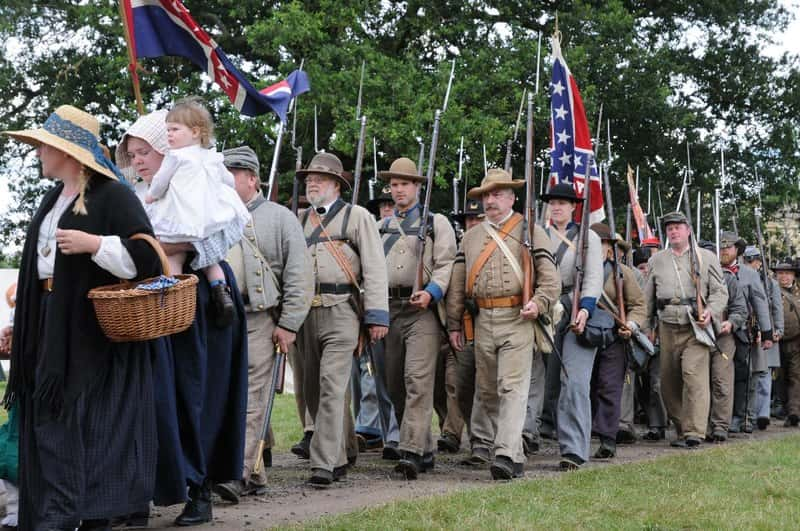
34. Blood Grudge
George Hearst should have developed a greater appreciation for elections…he might have won more of them. In 1885, Hearst ran for the US Senate but was defeated by railroad executive Leland Stanford—the guy after whom Stanford University is named. But for Hearst, the loss wasn’t the worst part: Stanford was the former president of the Central Pacific Railroad, his sworn enemy.
35. Forgive, Don’t Forget
As it turns out, Hearst didn’t really need to develop a healthy respect for elections. When a vacancy opened up in the US Senate in 1886, Hearst was appointed to fill the seat. He did manage to win a seat in the following regular election, however—and then focused his time in office on taking revenge on the Central Pacific Railroad.
36. Best of Frenemies
It’s hard to imagine the kinds of games that multi-millionaire industrialists and robber barons get up to. Running against one another in elections, using the federal government to dismantle each other’s’ empires…Despite their apparent political in-fighting, Hearst and Stanford were actually lifelong friends.
37. Be Brief, Be Concise
Have you ever turned on your television excited to see what’s happening on C-SPAN? No? Of course, not. It’s boring. That is, unless the politician talking was George Hearst. Hearst’s speeches in the US Senate were described as “blissfully short.” There may have been good reason for that…
38. Not So Hooked on Phonics
Hearst grew up in rural Missouri before there was much in the way of a local school board. As such, Hearst had very little formal education, and it showed. Those who knew him remembered Hearst as being “almost illiterate.” I guess reading and writing weren’t prerequisites for becoming a millionaire senator in 19th-century America.
39. Not to Be a Stickler…
Hearst’s wife, Phoebe Apperson, was a schoolteacher. How her husband’s poor reading and writing skills didn’t drive her crazy is far beyond me. In letters that he wrote to her, Hearst misspelled “jealous” as “jelous” and “patronage” as “patrinage.” She must have been blinded by all of that money that they were making.
40. You Can Take the Boy Out of the Log Cabin but…
Quite apart from his near illiteracy, there wasn’t much about George Hearst that fit the mold of the average Gilded Age millionaire. Hearst was an avid gambler—poker, apparently, was his game—and liked bourbon and tobacco. Compare that to John D. Rockefeller—the consummate Gilded Age industrialist—who wouldn’t have the sight of liquor or tobacco on him.
41. Dirt-Couture
Forget Tom Ford, Paul Smith, and Givenchy. What about the dirt-stained coveralls that you wore to the mine? Not only was George Hearst’s personality not that of a well-off gentleman, but his appearance was described as “rough, disheveled, and crude.” He would show up to board meetings in the same clothes he would wear to rummage about in a mine…
42. Hearst, Enter Stage Right
George Hearst may have been poorly educated and barely literate but you can’t call him uncultured. One of Hearst’s first investments outside of mining was in a small theater in Nevada City.
43. Just Trust Me
Prospecting is serious business. It takes a wealth of geologic knowledge and experience and…blind faith? One of George Hearst’s good friends and associates, Marcus Daly, approached Hearst to invest in a mine that he hadn’t seen. And Hearst agreed! Fortunately for Hearst, it turned out to be wildly successful and he made even more money…because, you know, he needed more of that.
44. Check Your Inbox
The rough mining towns where Hearst spent most of his time were no place to raise a family. Disconnected from the rest of civilization, these oftentimes lawless communities were for only the gruffest of “frontiersmen.” Phoebe Apperson and her newborn son stayed behind in San Francisco while Hearst, hundreds of miles away, toiled away at the mines.
He communicated with his wife via letters that had to be hand-delivered by his business associates.
45. Ghosted
George Hearst only had one child—William Randolph Hearst. The younger Hearst would go on to build one of the greatest media empires in history—but their relationship was far from pleasant. The elder Hearst notoriously failed to reply to his son’s letters. He was likely disappointed that the kid dropped out of university, spent his money with abandon and had no interest in mining.
George only had himself to blame, however, for William’s chosen career path…
46. Dirty but Not Soiled
Despite some of the controversy swirling around his acquisition of the Homestake Mine, George Hearst’s reputation was untarnished. Congressman Charles N. Felton said of Hearst’s fortune, “[N]o part of it was extorted from others, no part soiled with dishonor; [he] left a pure legacy….” The creators of the TV series Deadwood took some liberties with Heart’s character.
47. Money Make Not the Man
It’s happened a million and one times in history and pop culture: someone becomes rich and famous and forgets all about their roots. This was not at all the case for George Hearst. At his memorial service by the Senate and Congress, a presentation read, “A change in fortune made no change in the man.” Those are pretty complimentary words.
Hearst Memorial Mining Building
48. See No Evil, Hear No Evil
There was a dark side to Hearst’s success with Homestake Mine. A Hearst employee was reported to have killed a competitor who refused to sell his claim. While there’s no documentation to suggest that Hearst was in any way involved in the savage act, it is curious that all of the witnesses disappeared… I wonder if detectives ever got a warrant to search those cavernous mines.
49. Censorship, Deadwood Style
Who knew that writing was such a dangerous business? The editor of a newspaper that competed with Hearst’s papers was beaten on the streets of Deadwood. Again, there’s no evidence to suggest that Hearst was involved, but the bodies did seem to be piling up...Regardless of whether or not he really was involved, Hearst did fear retaliation for the brutal crime…
50. I Bequeath…
The competition in Deadwood for claim over the Homestake Mine got so heated that George Hearst began to plan for the worst. In letters to his business partners, Hearst implored his associates to look after his family in the event that he was, gulp, killed. And just to think, all of this violence was over some shiny metal.
Sources: 1, 2, 3, 4, 5, 6, 7, 8, 9, 10, 11, 12, 13, 14, 15, 16, 17, 18, 19, 20, 21, 22

